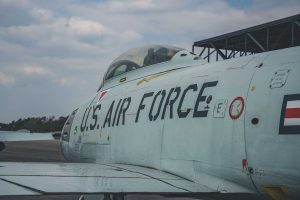
Are you wanting to fill your life with adventure? If so, enlisting in the United States Air Force could be the perfect option.
Joining the Air Force is a big decision, and the recruitment process can seem daunting. Fortunately, the process of talking to a recruiter doesn’t have to be overwhelming.
In this guide, we’ll provide you with everything you need to know about what to expect at your local Air Force recruiting office.
From initial meetings with recruiters to the actual enlistment process, we’ll cover everything you need to know to feel confident and prepared during your journey to enlisting in the US Armed Forces. Keep reading to learn more.
What to Bring
When visiting your Air Force recruiting office, it’s important to bring a few key items with you. First and foremost, you’ll need a valid photo ID, such as a driver’s license or passport.
You’ll also need to bring your Social Security card, educational and employment records, and any medical records or documentation related to legal issues. This should include traffic violations or arrests.
It’s important to bring these documents with you to ensure a smooth and efficient recruitment process.
Initial Meeting With a Recruiter
Your initial Air Force enlistment interview is an opportunity for the Air Force recruiter to get to know you and learn more about your background, education, and career goals.
During this meeting, they will also explain the requirements for joining the Air Force. This includes age and fitness standards. It’s important to come prepared with questions about the recruitment process or the Air Force in general.
This meeting is also a chance for you to learn more about the different career paths within the Air Force and determine which one is right for you.
Taking the ASVAB
The Armed Services Vocational Aptitude Battery is a multiple-choice test. It’s designed to measure your strengths and weaknesses in various areas. This includes math, science, and language skills.
The test is used to determine your eligibility for various career paths within the Air Force. The ASVAB is typically taken at the recruiting office or a nearby testing center.
It’s important to study and prepare for the ASVAB, as your score will determine which career paths you are eligible for.
Physical Examination
If you meet the initial qualifications and pass the ASVAB, the next step is an Air Force medical check. The examination includes a medical history review, hearing and vision tests, and a physical fitness assessment.
You will also be required to provide a urine sample for drug and alcohol screening. It’s important to come prepared for the physical examination. This includes the need to wear comfortable clothing. You should also bring any necessary medical documentation.
Background Check
All potential Air Force recruits undergo a background check to ensure they meet the standards for military service. This includes a criminal background check, credit check, and a review of your educational and employment history.
Any issues with your background could impact your eligibility for certain jobs or your overall eligibility for military service. It’s important to be honest and upfront about your background during the recruitment process.
Choosing a Career Path
Once you’ve passed all of the required assessments, you’ll work with a recruiter to choose from various Air Force career opportunities. Your recruiter will help you explore the various options and choose a path that aligns with your interests and strengths.
You’ll also receive information about the training and education required for your chosen career.
It’s important to take the time to research and understand the different career paths available to you, as this decision will have a significant impact on your future in the Air Force.
Enlistment
If you decide to join, the Air Force enlistment process starts when you sign an enlistment contract that outlines your terms of service. The contract includes information about your chosen career path, pay and benefits, and the length of your service commitment.
You’ll also take the Oath of Enlistment, which is a commitment to uphold the values and principles of the Air Force.
Basic Training
After enlisting, the next step is basic training. Basic training is a rigorous 8-week program designed to prepare you for military service. You’ll learn important skills such as discipline, teamwork, and physical fitness.
Basic training will also introduce you to the military lifestyle and culture.
Advanced Training
After completing basic training, you’ll move on to advanced training. The length and location of your advanced training will depend on your chosen career path.
Advanced training will provide you with the knowledge and skills needed to succeed in your chosen career.
Job Placement
After completing advanced training, you’ll be assigned to a unit based on your career path and the needs of the Air Force. Your first duty station may be anywhere in the world, so it’s important to be flexible and open to new experiences.
Benefits of Joining the Air Force
Joining the Air Force offers a variety of benefits. These include job security, educational opportunities, healthcare, and retirement benefits.
The Air Force also offers a variety of special pay and allowances for certain jobs and circumstances.
Visiting an Air Force Recruiting Office
It’s no secret that one of the best things you can do to give back to your country is to become a member of the United States Armed Forces. Fortunately, this guide to visiting an air force recruiting office will help make it an inspiring experience.
Please continue reading to learn everything you need to know before joining the US Air Force. Find your Air Force recruiter .
